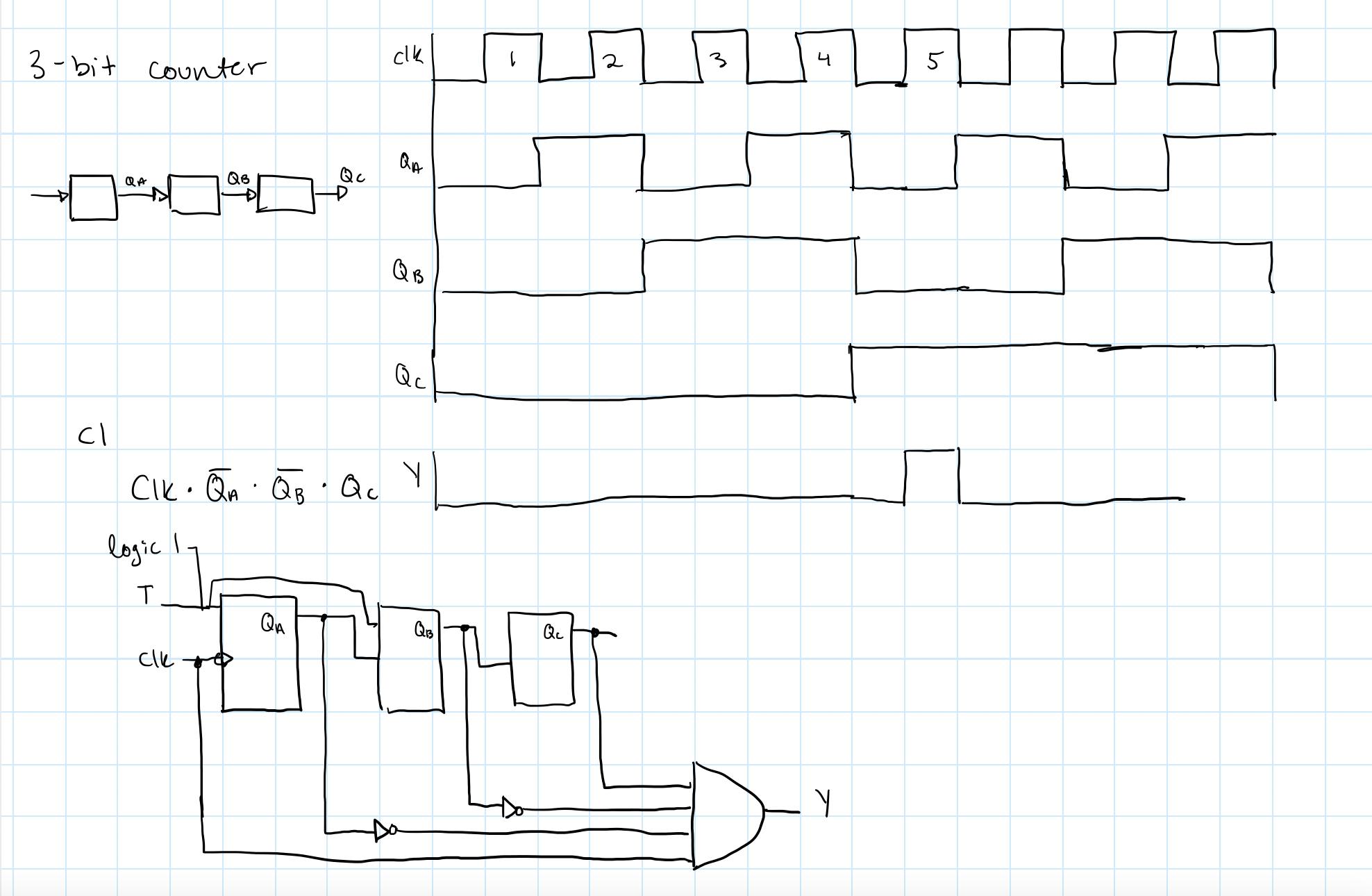I'm working on a problem where I'm trying to design a digital logic circuit (sequential circuit?) to produce output Y given input A:
So the goal is to produce one pulse for every 5 input pulses.
What I've got so far is to use a 3-bit counter, and then feed their outputs into an AND gate like below (everything is negative edge-triggered):

My thought was that the output should only be high when (CLK and Qc and NOT Qb and NOT Qa) is high. Does this make sense? I don't have a simulink license so I'm not sure how to check this. Is there a better/simpler way to do this/am I missing something? Any pointers or guidance are appreciated. Thanks!


